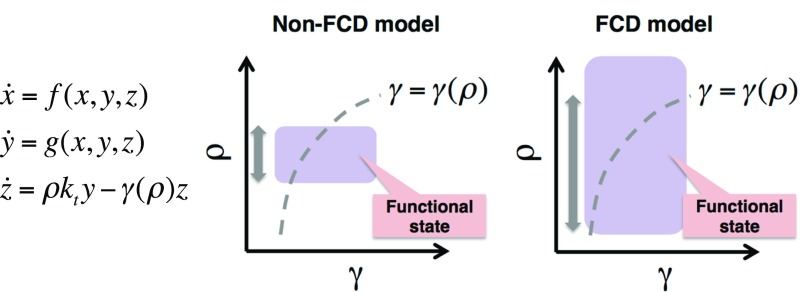Fig. S7.
The robustness of oscillations also holds when the rate of degradation depends on cell density. Equations of a secrete-and-sense system with FCD (Left). The degradation rate of the extracellular signaling molecule γ depends on the cell density ρ. Realizable states of the system in the γ–ρ plane is restricted to a curve due to dependence of γ on ρ (Middle and Right; dashed lines). The shaded areas in the γ–ρ planes represent functional states (e.g., oscillatory states) of the system (Middle and Right; purple). The double-headed arrows indicate the density range in which the dotted lines and the purple areas overlap, that is, the functional (oscillatory) cell density range. Compared with non-FCD models (Left), the functional range expands in the ρ direction in FCD models (Right) due to the FCD property of the constituent cells (i.e., subsystem x and y).

